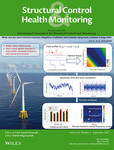Hybrid isolation system with wire-rope isolators and magnetorheological dampers for the isolation of blast-induced vibration
Funding information: National Defense Scientific Research Program of China, Grant/Award Number: 216J16
Summary
The aim of this research is to improve the isolation performance and energy dissipation characteristics of the widely used passive isolation (PI) system with wire-rope isolators (WRIs) under the excitation of various blast-induced vibration loads through the use of a semi-active control system. A hybrid isolation (HI) system composed of WRIs and an innovative magnetorheological (MR) damper equipped with a motion controller is proposed, which can protect sensitive equipment and nonstructural elements by attenuating their dynamic response. The designs of the MR damper's magnetic circuit and control system were validated by establishing an electromagnetic field finite element model and a motion controller simulation model, respectively. A series of quasi-static and shock table tests were conducted on models using three types of isolation: (1) a PI with WRIs, (2) an HI without a motion controller, and (3) an HI alone. The results show that the proposed MR damper can effectively restrain the tensile vibration of WRIs, significantly increase the isolation rate, and provide greater energy dissipation in HI systems with different weights of static loading subjected to various blast-induced vibration loads.
Open Research
DATA AVAILABILITY STATEMENT
Research data are not shared.




